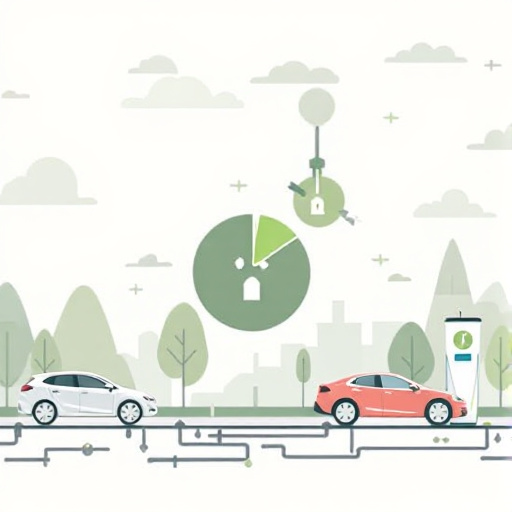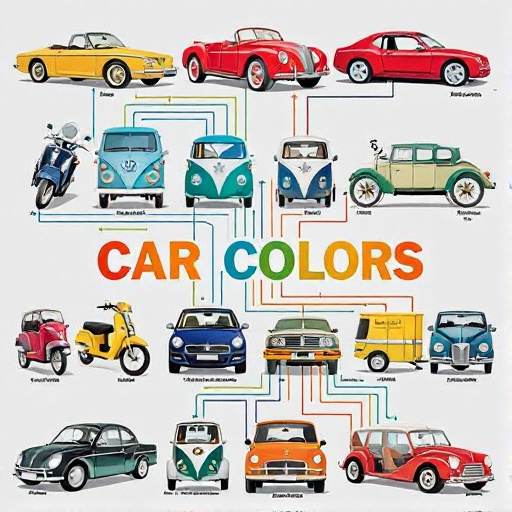Related Articles
- Charged Up! How Electric Vehicles are Reshaping Urban Wildlife Habitats and Biodiversity
- Navigating the Used Car Market: Uncovering the Secrets of 'As-Is' Sales for Savvy Buyers
- The Rise of Electric Car Pop-up Shops: A New Frontier for Urban Retail Experiences
- The Forgotten Art of DIY Car Maintenance: Rediscovering Skills in a Tech-Driven World
- Electric vs. Vintage: The Battle for Enthusiasts' Hearts in the Age of Latest Car Models
- The Rise of the 'Car Review Influencer': How Social Media is Shaping Auto Buying Decisions
Unlocking the Secrets: How the Rise of EVs is Shifting Traditional Car Buying Habits in Unexpected Ways
Unlocking the Secrets: How the Rise of EVs is Shifting Traditional Car Buying Habits in Unexpected Ways
The rise of electric vehicles (EVs) is transforming how consumers approach buying cars, shifting traditional habits and preferences in surprising ways. From affordability concerns to changes in brand loyalty, these electrifying rides are steering the auto industry into uncharted territory.
Changing Buyer Demographics
Interestingly, the demographic profile of those buying EVs is shifting rapidly. According to a study from the Pew Research Center, younger consumers, particularly Millennials and Gen Z, are significantly more inclined to consider an electric vehicle than previous generations (Pew Research Center, 2021). As tech-savvy individuals more invested in climate change solutions, these younger buyers are rallying around the electric revolution. Gone are the days when car ownership was primarily about horsepower and luxury; today, sustainability often tops the list.
The Rise of Affordability
Of course, the conversation around EVs isn't just about who is buying but also about how people's perceptions of cost are evolving. A stunning statistic: nearly 69% of respondents from a survey conducted by Deloitte reported that the purchase price of an EV was a significant concern (Deloitte, 2022). However, recent advancements in technology have made EVs more affordable. By 2025, it’s predicted that the price of EVs will reach parity with internal combustion engine (ICE) vehicles, pushing buyers who were once hesitant to embrace electric’s low running costs and tax incentives.
The Switch in Brand Loyalty
Brand loyalty, once a cornerstone of traditional auto buying, is now being tested. Where consumers once gravitated towards established automotive brands like Ford or Chevrolet, new entrants like Tesla are commanding attention. Tesla has redefined the automobile market, proving that EVs can offer both performance and sustainability, creating a cult-like following among devoted fans who prioritize innovation.
Test Drive and the EV Experience
Let’s face it—a test drive is a make-or-break moment for any car buyer. Interestingly, the EV experience during these drives is sparking new emotional connections between buyers and their vehicles. Many potential EV owners are taken aback by the sensation of instant torque and near-silent acceleration. For instance, one buyer reported, "It felt like I was driving a spaceship, and after feeling that rush, I couldn’t imagine going back to a gas guzzler!" Talk about a game-changer.
Unexpected Influences: The Role of Social Media
Another surprising factor in this shift of buying habits is the impact of social media. Platforms like Instagram and TikTok are influencing what buyers consider “cool.” Now, with user-generated content showing off sleek EV designs and performances, influencers are shaping purchasing decisions. A viral TikTok might lead to a surge in a specific EV's sales, demonstrating how social media can change the car-buying landscape overnight.
Environmental Consciousness
Carlos, a 35-year-old IT professional, can attest to this fact. "Growing up, driving a big SUV was the norm. Nowadays, after realizing the impact of climate change, I’ve dedicated myself to responsible choices." With societal values shifting, environmentally conscious consumers are seeking to lower their carbon footprints, and EV ownership has become a badge of honor. This newfound priority for sustainability is prompting dealerships to adapt their marketing strategies to showcase eco-friendly features.
Learning and Education: The EV Knowledge Gap
Just as consumers are evolving, so too are the ways in which they educate themselves about vehicle purchasing. Surveys reveal that nearly 56% of potential EV buyers feel overwhelmed by electric technology, indicating a clear gap in understanding (McKinsey & Company, 2023). Educating consumers about electric technology and its benefits is becoming vital for manufacturers and dealerships alike. Workshops, virtual showrooms, and comprehensive online resources are popping up to bridge this knowledge gap.
An Anecdotal Journey into EV Ownership
Just last summer, I embarked on my own journey into EV ownership. With skepticism in my heart, I traded in my beloved but gas-powered sedan for a new electric model. The first few days were an adjustment: charging was different, and I had to plan road trips strategically. But after three months of driving, I can assure you, I’ve become an evangelist for electric vehicles! The savings on gas were eye-opening, and my community even approves of my eco-friendly choice.
Service Culture and Maintenance Perceptions
Traditionally, buyers have been encouraged by service records and maintenance history, but EVs introduce a new paradigm. With fewer moving parts and less frequent maintenance needs, buyers are rethinking how they consider long-term ownership. A case study by the Electric Vehicle Association indicated that EV owners typically spend over 60% less on maintenance than their gas-powered counterparts (Electric Vehicle Association, 2021). This is a stark contrast to the frequent oil changes and repairs historically associated with ICE vehicles.
Innovative Financing Options
One dynamic that’s emerged in this changing landscape is innovative financing options. Car buyers today are not limited to traditional loans; instead, they can explore various leasing options or even subscription services for EVs that allow for much-needed flexibility. This accessibility caters to consumers across different financial backgrounds, making it easier for them to embrace electric vehicles without the financial strain.
The Role of Policy in Shaping Buyer Behavior
Government policies are also playing a significant role in steering buyers toward EVs. Consider this: several countries offer incentives ranging from tax credits to rebates on EV purchases, dramatically impacting consumer choices. In the United States, the federal tax credit for electric vehicles can offer up to $7,500 (U.S. Department of Energy, 2023). With such incentives, the cost becomes far more manageable, nudging consumers who might otherwise stick with traditional vehicles.
Skepticism and Misunderstanding
However, not everyone is on board with the shift. Many potential buyers, particularly those older than 50, express skepticism about EV reliability and charging infrastructure. The associated range anxiety is real—what if you run out of battery before reaching a charging station? Addressing these misconceptions through clear communication and factual information will be essential for industry stakeholders seeking to engage this demographic.
Conclusion: The Road Ahead
As electric vehicles carve a new path in an industry long dominated by conventional fuel sources, it’s clear that we are in the midst of a significant evolution in car-buying habits. With shifting demographics, innovative financing options, and the push for environmental consciousness, traditional models are being redefined. For anyone involved in this exciting automotive revolution—be it manufacturers, dealers, or consumers—the journey ahead is bound to be thrilling.
So, where do we go from here? For buyers, the message is clear: expand your horizons and embrace the change that electric vehicles bring. For the automotive industry, it’s time to adapt or risk being left behind in the dust of the gas-guzzlers of yesteryear.




